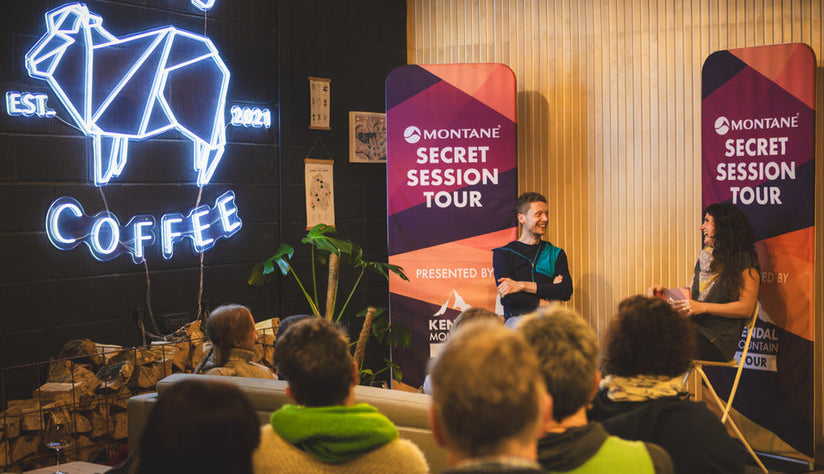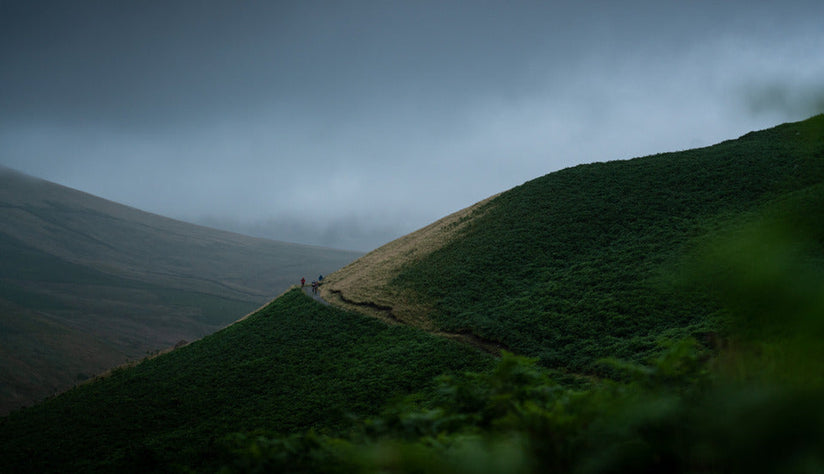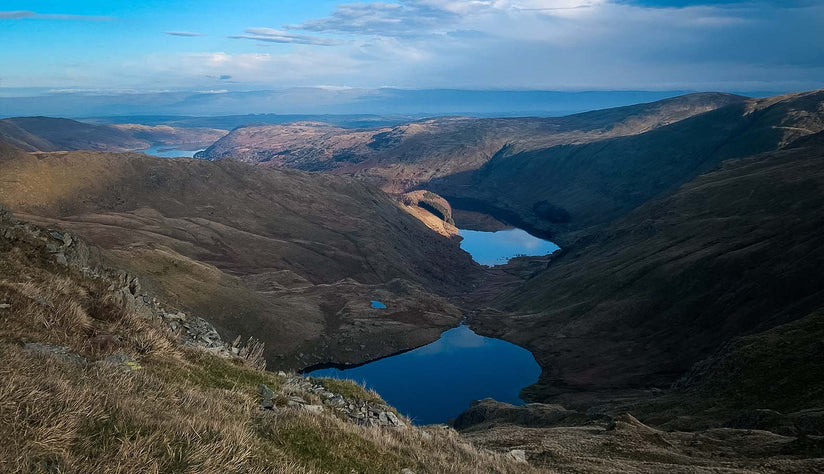Traversing 40 miles, ascending over 2,088 metres - the Grand Traverse Ski pushes skiers to their limits on an epic race from Crested Butte to Aspen, Colorado. In between racers take on some of the finest backcountry skiing to be found in the state (and arguably the US). Take a look at our story behind to discover more about the race origins and route highlights.
Having taken on the race in 2022, experienced skier Graham Zimmerman is returning for another go at this wild ski race in the snowy Rockies. Keep reading to discover the lure of this time honoured ski event and what it actually involves to ski across some of the USA's wildest mountains in the winter…
 Introducing Graham
Introducing Graham
Graham is a professional alpinist focused on cutting-edge routes in the world's big mountains and using the stories he gathers there to make the world a better place.
His climbing career has taken him on over 30 expeditions, from Alaska to Pakistan, where he has established dozens of significant new routes. For his climbing exploits, Graham has won several awards, including the 2020 Piolet d'Or (alpine climbing's equivalent to an Olympic gold medal).
As a storyteller and advocate, Graham is focused on the intersection of social equity and systemic solutions to human-driven climate change. He also works for Protect Our Winters and the American Alpine Club Board President.

Overview of the Grand Traverse
The Grand Traverse ski race is a fabulous adventure across the wilds of the Elk Mountains. It is a nearly 40-mile race that starts in Crested Butte, Colorado, and ends in Aspen. It is a test of endurance, skill, and mental toughness that relies on partnership.
Last year was my first time taking on the race with my dear friend Forest Woodward. We didn’t enter to win but simply to spend a wild night together skiing through the mountains. Below is a description of the course (and my experiences) alongside a series of notes I jotted down after last year's race. They are split into the race’s several sections, each with its own unique challenges.

How the race unfolded
Starting at midnight, the course ascends from the base area of Crested up the “Five Way” intersection. I found myself drawn to ski fast, but watched my heart rate monitor, trying to keep it under my aerobic threshold. At the top of the hill, we ripped our skins and started skating along the groomed ridge. We felt fast and we felt good. Then, we hit a groomed downhill and along with hundreds of others, careened off into the backcountry on our tiny skis.
It got chaotic as we continued down, finally arriving at the valley floor where we kept skating until slowed by isothermal conditions (hoping for better conditions this year). We put on our fastest skins, headed up the East River, and then Brush Creek towards Star Pass. This part of the race dragged on, but we knew we were only getting started. Skiing in the cool night air felt wonderful.
We kept skins on and the climb was gradual until Star Pass. Below the pass it finally felt like we really started skiing uphill and we headed into the alpine. We reached Star Pass just before the sun started to rise. It had already felt like a long day, but I had been told by my friend Torey, that this was the point when “the race really begins.” He was not wrong.
We ripped our skins and dropped into the 1000-foot descent to the bottom of the Taylor Basin, which was both relieving and committing. From that point forward, the trail was very remote and rescue would have been very challenging. At the base of the downhill, next to a big bonfire, we put on fresh socks and a fresh pair of skins, before heading out into the Taylor Flats.
I had been told about glorious views across the Elk Range during this part of the race. But instead we found ourselves skiing in a whiteout for hours, carefully traversing from flag to flag in the mirky weather. It was here, in high wind and disorienting ground blizzards that my alpine climbing background felt well applied.
We kept our heads down and didn’t stop until we reached Taylor Pass, where we ripped our skins and then transitioned for the climb to Richmond Ridge. Not long after we reached the Barnard Checkpoint.

The final stretch
From the Checkpoint, we cast off into the undulating ups and downs of Richmond Ridge. We tried to skate as much as possible but seemed unable to catch a rhythm and ended up grinding out most of the ridge with skins on. This was part of the race that felt like a drag, where I wished I had a little more fitness and could skate more, or simply be finished faster.
We had brought earbuds for when things got hard. We put them in and kept moving. After 7 miles, we reached the top of the Aspen Ski Area. We ripped our skins, and I pointed my skis downhill, planning on a fast descent. But I quickly found that my legs were cooked, and the 3,000-foot descent quickly turned into an agonizing pizza French fry affair.
Finally, at just under 12 hours, we pulled into Gondola Plaza. We promptly found some snacks and beverages before sitting down at the finish line and cheering on our fellow racers for the remainder of the day.

Lessons learnt on the GT trail
If you’re entering this year, I hope you have a blast! If you’re just checking in to learn more - I hope this encourages you to get involved. Here are some key takeaways I will be aiming to put in to practice this time around:
Acclimate as much as possible.
At the start - stay outside to avoid crowding. Start mid pack.
Rip skins as soon as you hit the top of the CB hill, then skate downhill.
Skate for 2-3 minutes to reach the first post-CB climb.
Treat the first 30 minutes as a warm-up (research what the best warm-up is - in particular regards to elevation, heart rate, and cadence)
Apply fast skins for lots of gliding. Drive knees and pole hard using classic Nordic technique.
Skin all the way to star pass.
Control pacing - keep it between 5-10% off of your aerobic threshold - don’t worry about passing unless your dropping below 20% of your aerobic threshold. When passing - do not blow up.
Consistent eating and drinking are imperative.
Stay on route coming off Star (no hot dogging in powder).
Ski/skate for 1-2 minutes past the bonfire fire.
Then fast skins. Use long poles with straps.
Passing becomes much easier once the terrain opens up. Stick to HR threshold plan. Keep eating and drinking.

Feeling inspired?
Head to our dedicated Grand Traverse event hub to keep up with all the latest race action. You can also hear from more GT racers this season in our #TeamMontane Q&A, and hear from the race director in our podcast to learn even more about the Grand Traverse Ski.

















